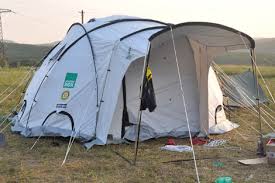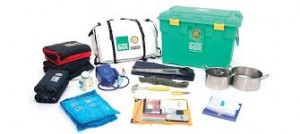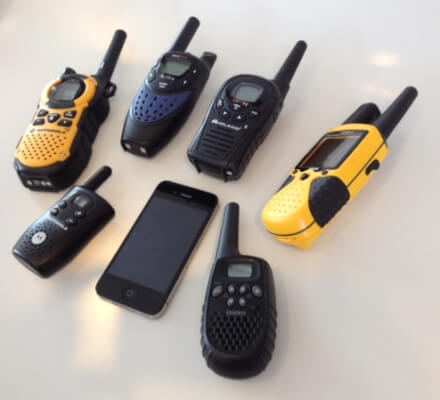Guest Speaker Sparks New Interest
Our neighborhood Emergency Response Group meets pretty much monthly, but when we go for weeks and months without a fire, or an earthquake, or even a downpour, sometimes it’s hard to keep up members’ enthusiasm.
Last month’s meeting “hit the spot” with a guest speaker.
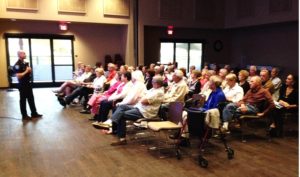 We invited the new head of our city’s Office of Energy Management. And since he is new to the job, we provided him with . . .
We invited the new head of our city’s Office of Energy Management. And since he is new to the job, we provided him with . . .
Some questions to start the discussion.
Here are his answers, with a few comments from me. You might be able to use these same questions for your own group, or for your own guest speaker representing an official position. In any case, even if it takes some research, your neighborhood group members should know the answers.
Q: What kinds of emergencies does the City prepare for?
A: Our City’s Emergency Plan lists 9 threats — natural, man-made and what we call “technological incidents.” It’s not just earthquakes; we could be hit by an airplane crash, a chemical spill, a wildfire . . . you name it.
Q: Who’s in charge?
A: When the City activates its EOC (Emergency Operations Center), which is part of the Police Department, all directions come from there. The EOC coordinates local, city, county, and even state and federal resources when necessary.
Q: How often is the EOC activated?
A: It wasn’t activated at all in 2015, which was unusual. In prior years it’s been activated for a major power outage and also for a big manhunt. Training takes place regularly, though. We train using table-top exercises, functional exercises (testing one particular function, like evacuation or communication) and full-scale exercises.
Q: In an emergency, how will we residents know what to do?
A: If all communications are out, expect a delay before you hear from us. But you have a better chance of getting the news if you have a landline (for reverse 911 calls), an emergency radio (channel 1640), and have access to social media via the internet. Both the City and the County have smart phone apps, too, that send out automated alerts and news.
Q: Should we turn off our gas if there’s an earthquake?
A: Use your nose as a sniffer! If you smell gas, contact the property manager or 911. In the case of multiple leaks, trained residents can turn off the gas to the whole neighborhood – but then you will ALL be without gas for days. In an earthquake, if there are multiple gas leaks, the real danger is fire, so do NOT start your car or otherwise cause a spark!
Q: What about evacuating?
A: Don’t go anywhere unless you’re told to by authorities. Our City has a number of evacuation centers and depending on the emergency we will choose which ones to use. We also have vans filled with supplies stationed throughout the City. The Red Cross has a goal of having an emergency shelter set up within 2 hours, but in a large-scale emergency that goal is not likely to be met.
It will take a while to organize everything – so be sure you have what you need to take care of yourself at home. (Note from Virginia: In our neighborhood, the plan is Shelter-in-Place for as long as it takes. We will be better off in our own beds and with our own things if at all possible.)
Q: How long a wait should we plan for?
A: We ask that you have supplies for AT LEAST 3 DAYS. Enough for 7 days would be better. That means water, food, medicines, flashlights, warm clothing, etc., for you and your pet. We recommend a gallon of water a day per person. (Virginia: We recommend 10 days to 2 weeks’ worth of supplies as being more realistic.)
Q: What about people with special needs?
A: Our city makes no particular plans for special members of the community because we can’t anticipate what will happen. If you are on oxygen, register with your oxygen company so you will be on their list. In a big emergency, it’s your neighbors who will be most able to help right away. Make friends! (Virginia: This answer wasn’t satisfactory. Watch for more in an upcoming Advisory.)
Q: What role does the Neighborhood Emergency Response Team play?
A: The City has free Community Emergency Response Team (CERT) training, and a number of people here have had that training. CERT graduates will have an idea — and the SAME idea —of how to respond in an emergency: how to check on neighbors, assess damage, and manage communications. If you have taken the training, you will be safer yourself, and be able to step up to help.
(Virginia adds: Because our neighborhood team has its own ham radio station, it can listen in to emergency communications and actually report in on conditions here. Most neighborhoods won’t be able to do that.)
Q: How will we know what to report?
A: It all depends on having Block Captains who know their neighbors and know how to use their walkie-talkies to report in. You will always need more members of the team because you don’t know who will be here when an emergency hits.
Q: How do we find out more about CERT?
A: Contact the City.
Q: How do we find out more about our local group?
A: Contact your group leader to find out more.
At this point, we took over the meeting.
We passed out maps of our neighborhood, showing the Divisions, with the names and phone numbers of the Division Leaders. We introduced the Division Leaders. Our guest from the Police Department handed out some lists of emergency supplies and some brochures with general safety tips.
Then we adjourned to cookies and punch.
As follow up to the meeting we will publish notes similar to this Advisory, and contact some people who seemed interested in CERT training. (Unfortunately, our City’s classes are full for the next few months.)
A new face, even with the same message, helps a lot to keep up the momentum of your preparedness efforts. Who can you get to speak to YOUR group?
Virginia
Your Emergency Plan Guide Team
 P.S. If you have taken on the responsibility of planning meetings for your local group, you may want to take a look at the collection of CERT Meeting Ideas we put together last year. It has over 20 proven ideas with agendas, timing, materials needed, etc.
P.S. If you have taken on the responsibility of planning meetings for your local group, you may want to take a look at the collection of CERT Meeting Ideas we put together last year. It has over 20 proven ideas with agendas, timing, materials needed, etc.
And stay tuned to Emergency Plan Guide, because we share our experiences — great and not-so-great — on a regular basis right here.






 You have three first-aid kits, don’t you? One in the house, one in the car, and one in your emergency backpack?
You have three first-aid kits, don’t you? One in the house, one in the car, and one in your emergency backpack?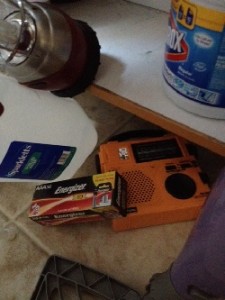
 Today is September 1. Today, in Japan, hundreds of thousands of people are taking place in a disaster drill on the anniversary of the 1923 Great Kanto Earthquake. And this year, they are being encouraged to stockpile toilet paper.
Today is September 1. Today, in Japan, hundreds of thousands of people are taking place in a disaster drill on the anniversary of the 1923 Great Kanto Earthquake. And this year, they are being encouraged to stockpile toilet paper.
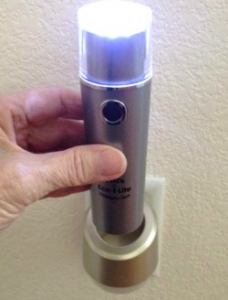 At about 4:30 p.m. last Saturday, with temperatures hovering around 92 degrees, I was working at my desk when WHAM!, the power went off.
At about 4:30 p.m. last Saturday, with temperatures hovering around 92 degrees, I was working at my desk when WHAM!, the power went off. One of my daughters is an executive and works in Beverly Hills, California. With no real public transit available she is forced to drive over 100 miles to and from work, spending a total of almost four hours on the road every day. Every morning she sets out in her executive clothing and footwear and with a list of business phone calls to make along the way.
One of my daughters is an executive and works in Beverly Hills, California. With no real public transit available she is forced to drive over 100 miles to and from work, spending a total of almost four hours on the road every day. Every morning she sets out in her executive clothing and footwear and with a list of business phone calls to make along the way.